Rene reported ]that she saw Magicicada nymphs in holes in a friend’s garden in SE Elmhurst Illinois.
We’re currently expecting the emergence to start on May 24th, but the hot weekend might have roused the cicadas to an early start. We’ll see.
Genera of cicadas.
Rene reported ]that she saw Magicicada nymphs in holes in a friend’s garden in SE Elmhurst Illinois.
We’re currently expecting the emergence to start on May 24th, but the hot weekend might have roused the cicadas to an early start. We’ll see.
The Return of the Cicadas 17-Year cicada documentary will be airing on PBS in the Brood XIII emergence area soon. As soon as next Thursday, 4/26. Set your Tivo/DVR to record it!
Periodical cicadas are among the most unique creatures in the animal kingdom. After spending 17 years underground as juveniles, they emerge for a brief, cacophonous population explosion aboveground, where they transform into adults, mate, lay eggs and die off after only a few weeks.
WFYI presents Return of the Cicadas, an original local documentary produced in association with the Indiana University Research and Teaching Preserve. Producer Samuel Orr followed the life cycle of Brood X, which made its momentous ascension in the spring of 2004. It accounted for one of the largest insect outbreaks on Earth. Many different broods exist, on unique 17-year schedules. Brood XIII is due to arrive in northern Indiana this May.
Through stunning close-up video and time-lapse photography, Orr and others offer an amazing glimpse at the lives of these enigmatic insects. The documentary was made possible by the research of IU biologist Keith Clay through grants provided by the National Science Foundation. The NSF and Science Magazine recognized the production with a national award for a short 5-minute film on the Brood X outbreak.
Santisuk Vibul’ s Cicada Photos of Genus Dundubia from Bagkok, Thailand:
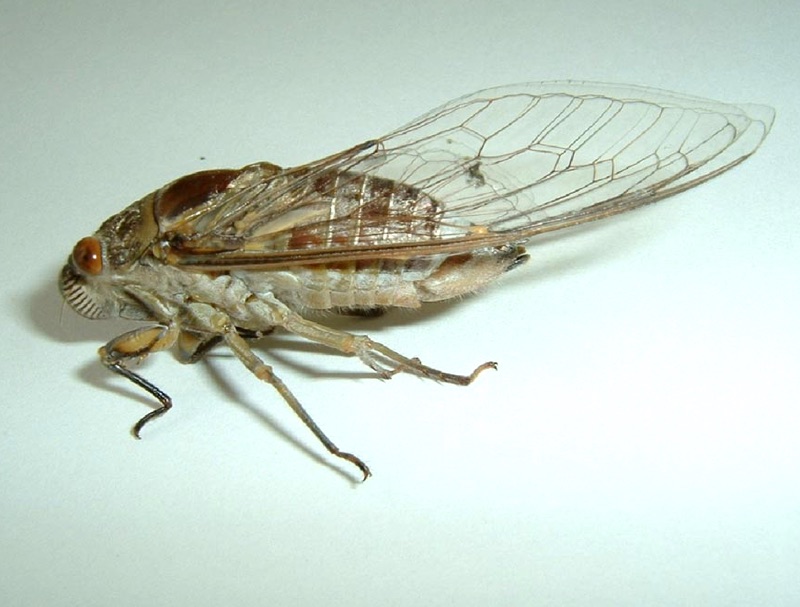
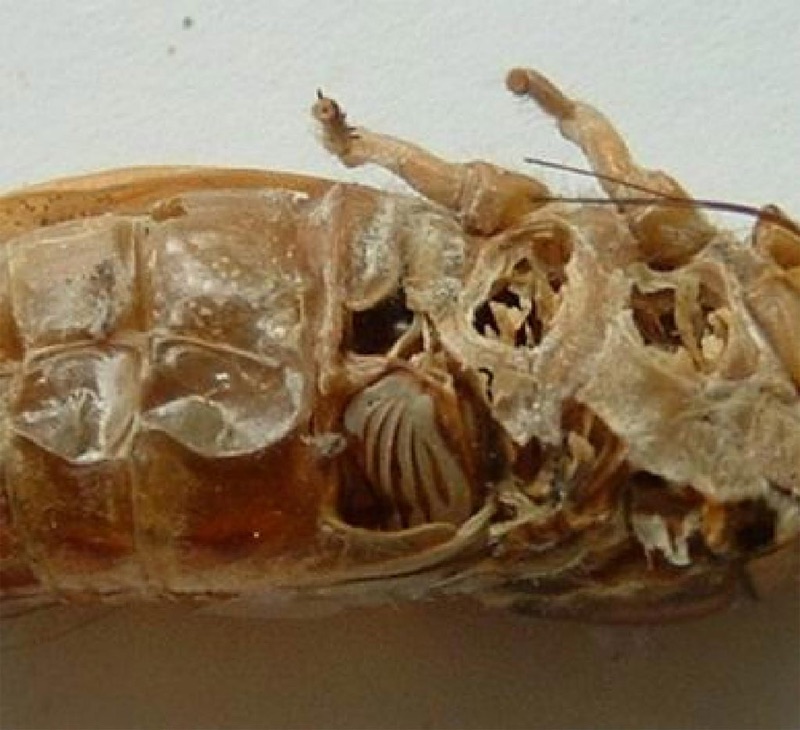
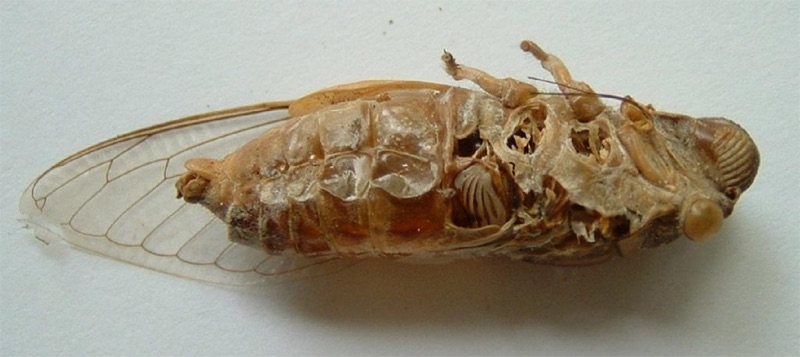
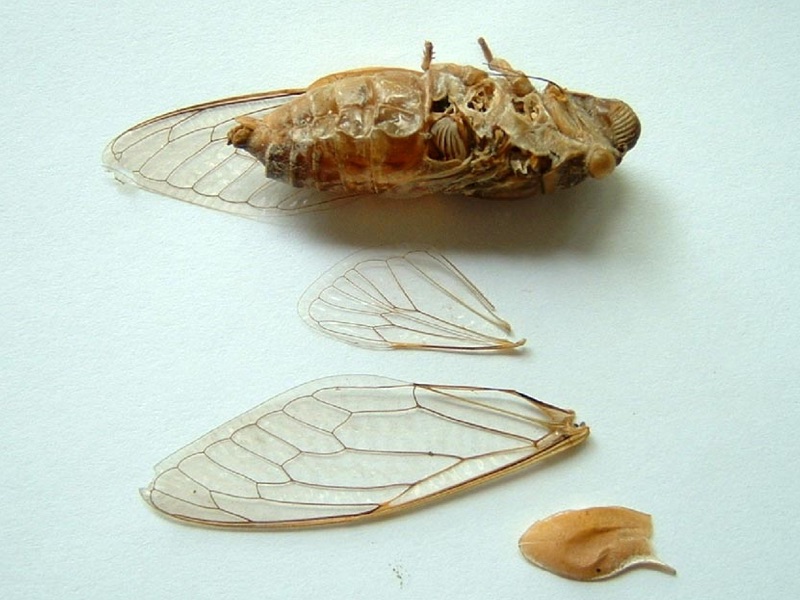
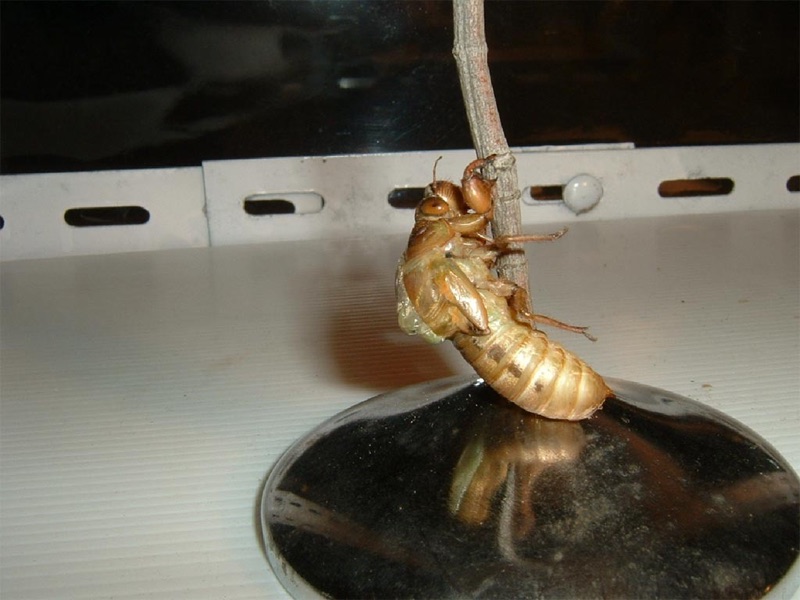
In my spare time (not a lot lately) I’ve been working on Google maps for plotting Magicicada Brood maps. I came up with a brood map for 2004 Brood X, but in it’s current state it’s very processor-intensive because it loads an XML file with about 300 entires, and each entry requires a call to Google. It’s not ready for “prime time” (still alpha, not even beta). I’m going to recode it to work off of longitude and latitude, and that should improve performance.
Hopefully people will mail us their 2007 Brood XIII sightings so I can build a Brood XIII map as well. I might even set up a form that lets people find their location on a map, and then submit it as longitude and latitude rather an actual address (for privacy reasons).
2004 Brood X map.

Here’s an audio clip of Magicicadas:
You could try this with northern Magicicada periodical cicadas, but I would avoid it for southern states like Louisiana (because you’ll get negative numbers, which will be confusing). Also, do not use temperature data from past years, because the weather is wildly variable and you’ll get a useless number.
Gene Kritsky was nice enough to send a paper he wrote with a formula for predicting the emergence date. E = (19.465 – t)/0.5136, where E = emergence start date in May and t = average April temperatures in °Celsius. His formula worked like a charm for predicting the Brood X emergence in Cincinnati. 80% of his sites had begun the emergence on the predicted date of May 14th of that year. Also when the ground temperature reaches a consistent ° Celsius that is another good sign the emergence is about to begin.
Try it out:
Updated: we updated the form to accept 3 numbers past the decimal in case you have super-precise temperature information.
To find the Average Mean Temperature in Celsius on the Weather Underground site:
Thanks to Roy Troutman and Gene.
Cicadas in Illinois, 13 or 17 Year “Locust”? — this page features a brood map of Illinois that shows you the general area where they’ll appear.
CicadaMobile hits the road, and article in the Daily Herald by Mike Zawislak. The Lake County Forest Preserve District has hired a cicada expert to travel around, educating people about cicadas. Awesome.
Starting April 16, the forest preserve district’s Cicada Mobile will be motoring to schools, festivals, farmers markets and other community gatherings through July. The program is free.
Thanks to Roy Troutman for passing this along.
An interesting article sent to us by Roy Troutman: Periodic Cicadas Help Scientists Study Superfast Muscle.
for scientists at the National Institute of Arthritis and Musculoskeletal and Skin Diseases (NIAMS), the periodic cicada also offer clues about how high-speed and high- performance muscles work, and how this knowledge might someday make human muscle work better.
1996 was the year I started this site, and the year I discovered the 17-year cicada. This is my cicada diary from 1996: